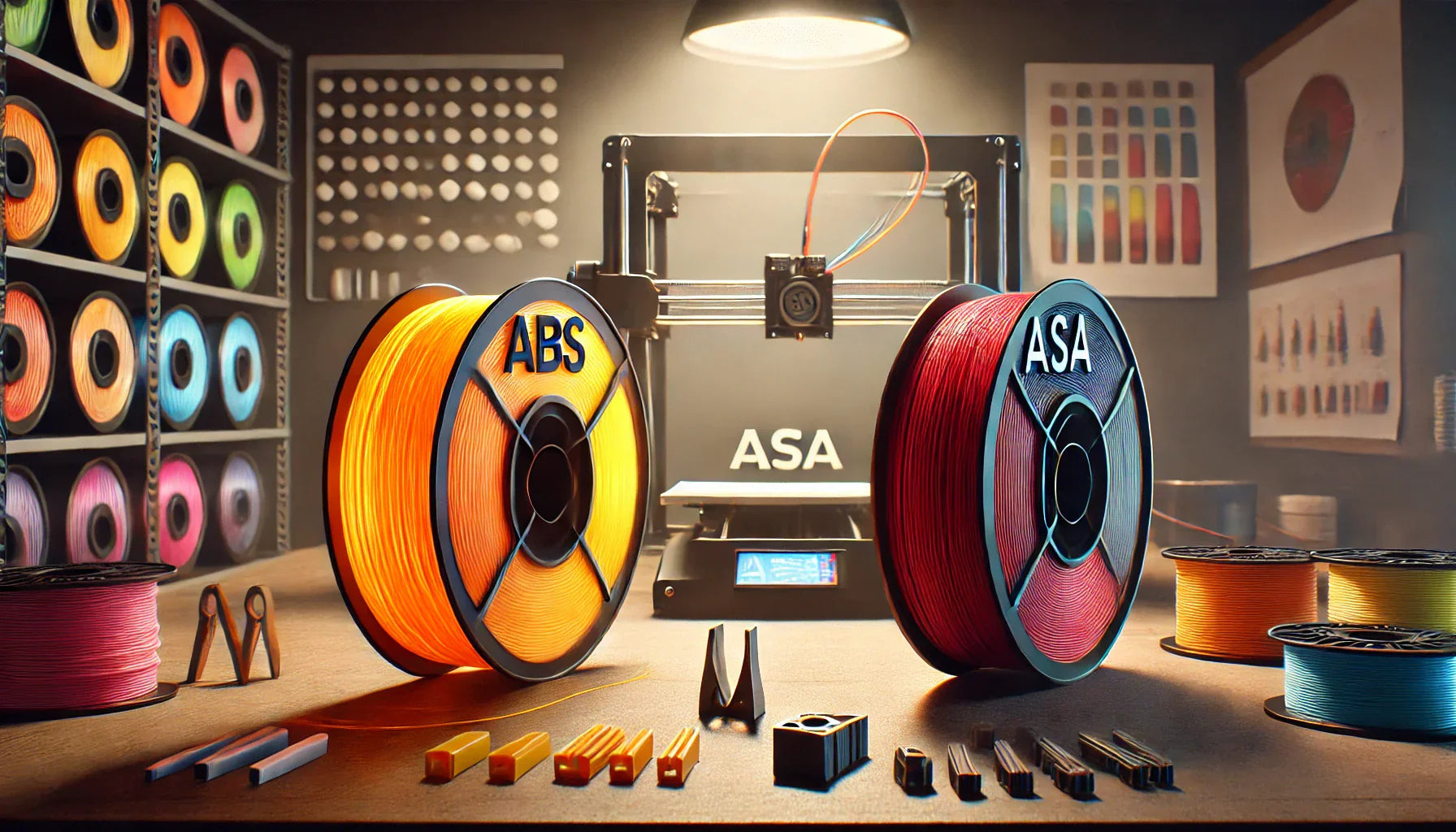When deciding between ABS (Acrylonitrile Butadiene Styrene) and ASA (Acrylonitrile Styrene Acrylate) filament for your 3D printing projects, it’s essential to understand the key differences between the two. Both filaments are known for their durability, strength, and versatility, but they each have unique properties that make them suitable for different applications. At 3D META, we offer both ABS and ASA filaments to help you create high-quality, reliable prints. In this guide, we’ll explore the distinctions between ABS and ASA and help you determine which one is the best fit for your specific needs.
What Is ABS Filament?
ABS is a widely used thermoplastic filament known for its excellent strength, impact resistance, and toughness. It’s commonly used in industries such as automotive, manufacturing, and consumer products. ABS is ideal for creating durable, functional parts that need to withstand stress, heat, and wear.
Key Features of ABS:
-
Durability: ABS is strong, impact-resistant, and well-suited for creating functional parts like mechanical components, casings, and prototypes.
-
Heat Resistance: ABS can withstand higher temperatures compared to other filaments like PLA, making it a good choice for parts that need to endure heat.
-
Post-Processing: ABS can be smoothed with acetone, allowing for a glossy finish and a more professional look for your prints.
-
Applications: ABS is used for producing durable prototypes, automotive parts, household items, and more.
What Is ASA Filament?
ASA is a more recent development and is closely related to ABS. However, ASA is designed to overcome some of the challenges associated with ABS, particularly its sensitivity to UV light and weathering. ASA retains many of ABS’s strengths while offering enhanced performance for outdoor applications.
Key Features of ASA:
-
UV and Weather Resistance: One of the main advantages of ASA over ABS is its superior resistance to UV radiation, which makes it ideal for outdoor applications. ASA retains its color and strength even when exposed to sunlight and harsh weather conditions.
-
Durability: Like ABS, ASA is strong, impact-resistant, and heat-resistant, making it suitable for functional parts that need to endure wear and tear.
-
Less Odor During Printing: ASA produces less odor compared to ABS during printing, which can be more comfortable for users working in enclosed spaces.
-
Applications: ASA is commonly used for outdoor signage, automotive parts, garden tools, and any project that will be exposed to the elements.
Key Differences Between ABS and ASA
1. UV and Weather Resistance
-
ABS is not UV resistant and can degrade when exposed to sunlight or weather over time, making it unsuitable for outdoor use.
-
ASA is specifically engineered for outdoor applications, offering UV resistance and the ability to maintain its color and strength even under harsh environmental conditions.
2. Ease of Printing
-
ABS can be more challenging to print with, as it requires a heated bed (typically around 90°C to 110°C) and is prone to warping and cracking during cooling.
-
ASA is easier to print compared to ABS, with a lower tendency to warp, although it still benefits from a heated bed. ASA can also be printed at a similar temperature range (around 230°C to 250°C for the extruder).
3. Post-Processing
-
ABS can be smoothed with acetone to achieve a glossy, professional finish.
-
ASA can also be smoothed with acetone, but it tends to retain a more matte finish than ABS, even after smoothing.
4. Durability
-
ABS is durable and tough but can become brittle over time when exposed to UV rays.
-
ASA offers the same strength and durability as ABS, but with the added benefit of being more resistant to weathering and UV light.
5. Applications
-
ABS is suitable for indoor functional parts, automotive components, and toys, but it is less ideal for outdoor use.
-
ASA excels in outdoor applications, including automotive parts, garden tools, and signage, where UV resistance is crucial.
Which Filament Should You Choose?
The decision between ABS and ASA depends on your specific project requirements:
-
Choose ABS if you're looking for a cost-effective filament for indoor applications, where UV exposure is not a concern, and you need strong, durable parts.
-
Opt for ASA if you're working on projects that will be exposed to outdoor conditions, such as automotive parts, signage, or any outdoor functional objects. ASA’s UV resistance and weathering properties make it the superior choice for these applications.
Shop Now at 3D META
At 3D META, we provide high-quality ABS and ASA filaments, ensuring that you have the best materials for your 3D printing needs. Whether you're creating functional parts for the indoors or outdoor components that need to withstand the elements, our filaments are designed to deliver exceptional results. Shop Now to explore our selection of durable filaments and start creating your next project with confidence. Let 3D META be your go-to source for all your 3D printing filament needs!

